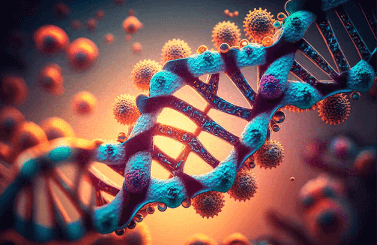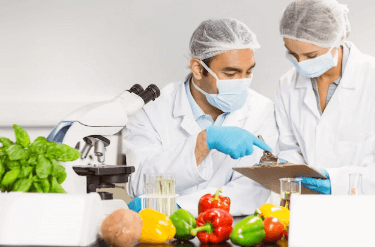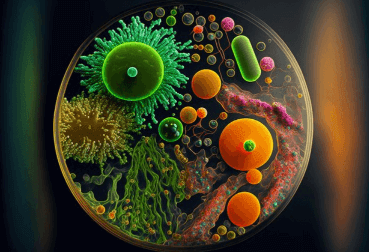Question
Statement 2: To multiply, bacteria require warmth, food, moisture and time.
Which of the following holds true for statement 1 and statement 2 respectively?
a.
True, False
b.
True, True
c.
False, False
d.
False, True
Posted under Food Engineering
Interact with the Community - Share Your Thoughts
Uncertain About the Answer? Seek Clarification Here.
Understand the Explanation? Include it Here.
Q. Statement 1: Pathogenic bacteria look, smell and taste perfectly normal. Statement 2: To multiply, bacteria require warmth, food, moisture and time. Which of the following...
Similar Questions
Explore Relevant Multiple Choice Questions (MCQs)
Q. Given below are certain facts about food contamination by fungus. Which one of the statements is untrue?
View solution
Q. Statement 1: Foreign objects entering food is called physical contamination of food.
Statement 2: Controlling moisture is the only precaution to be taken to prevent food contamination.
View solution
Q. Statement 1: Processing contaminants are the contaminants that are generated during the processing of food and hence are hard to control.
Statement 2: Packaging materials also cause contamination.
View solution
Q. Statement 1: Certain new contaminants called emerging contaminants are contaminants which are a relatively new discovery.
Statement 2: Packaging materials should have sanitary precautions and agricultural products should be sterilized.
View solution
Q. A substance intentionally added that affects the nature and quality of food is called _____
View solution
Q. When do we say that food is adulterated under the PFA Act?
View solution
Q. Statement 1: In the process of making certain oils, nickel is added as a catalyst.
Statement 2: Nickel is injurious for consumption.
View solution
Q. Statement 1: Adulteration takes place more in loosely sold items than those sold packed.
Statement 2: Powder and paste forms are more adulterated than solid lumps.
View solution
Q. Which stage does adulteration take place in?
View solution
Q. Which of the following is an adulterant?
View solution
Q. Why are adulterants added?
View solution
Q. Which of the following reason shows the impact of adulteration on the economy?
View solution
Q. Methods for detection of common adulterants are _____
View solution
Q. Tina observed the following when she tested the specific gravity of milk to check for adulteration- the specific gravity was lesser than that of pure milk. She complained to the milk vendor and the next day checked the specific gravity again. This time it came in the range of the desired specific gravity. Can we be assured that this is pure unadulterated milk?
View solution
Q. A substance intentionally added that preserves flavour and improves taste is called _____
View solution
Q. Which of the following is NOT a function of a food additive _____
View solution
Q. Statement 1: Stabilizers, Emulsifiers are certain examples of food additives.
Statement 2: Antioxidant is a class of food additive.
View solution
Q. Statement 1: Food additives are divided into direct and indirect types.
Statement 2: Direct food additives become a part of the food during packaging. These are in trace amounts.
View solution
Q. What is “carryover” principle?
View solution
Q. What are Sequestrants?
View solution
Recommended Subjects
Are you eager to expand your knowledge beyond Food Engineering? We've handpicked a range of related categories that you might find intriguing.
Click on the categories below to discover a wealth of MCQs and enrich your understanding of various subjects. Happy exploring!








